The strike started by workers at Poznań’s largest factory, the Joseph Stalin Metal Works, spread to the entire city, and became an anti-communist revolt. For the Stalinist regime, this was an earthquake.
by Paweł Sasanka
At 6 am on 28 June 1956, when the workers of the W-3 division came to work, none of them even looked at the machines. The sound of the factory siren did not mark the end of the night shift and the beginning of the day one, but announced the beginning of their strike. Half an hour later, the main factory siren wailed again, this time calling all workers to strike. And so began the day later known as Black Thursday or Poznań June.
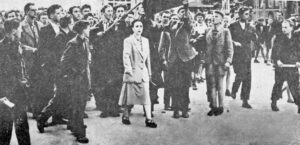
The thaw
Stalin’s death in March 1953 was a turning point in the global history of communism. The key features of a system based on fear and unprecedented terror perpetuated for a quarter of a century, were unsustainable and the empire, although seemingly at the peak of its power, had in fact exhausted its potential to operate on the previous terms. Aware of this, Stalin’s successors launched a process of controlled transformation. In communist-ruled Poland and Hungary, for various reasons, this ended in an outbreak of public discontent.
Compared to other countries from the bloc, the ‘thaw’ in Poland began with a significant delay. The impulse that accelerated it were the broadcasts on Radio Free Europe of the former Deputy Director of the Tenth Department in the dreaded Ministry of Public Security, Józef Światło, who fled to the West and, prior to that, had been one of the most trusted secret police officers, personally arresting people such as the former Secretary General of the Communist Party, Władysław Gomułka. In his talks, broadcast from September 1954 and listened to by thousands, Światło exposed the methods of the secret police, and revealed facts disgracing the ruling elite. The ferment had also spread among some of the party’s elites, which horrified those in power and forced them to react. They attempted to shift all of the responsibility for the enormity of the crimes from themselves and the communist party, to the most important security officers and the repression apparatus.
Published in September 1955 in Nowa Kultura, ‘Poemat dla Dorosłych’ [‘A Poem for Adults’] by Adam Ważyk, once a fanatical advocate of socialist realism, labelled, not without reason, a ‘terroretic’, was a testimony to the ferment in cultural and scientific milieus. At the same time, the student magazine Po Prostu, previously dead boring, changed its formula and started being published as a ‘magazine for students and young intelligentsia’. It brought young people together, most of them associated with communism, who now, in the hope of making the system more humane, were drawing up visions of a return to the sources of Marxism – and became a symbol of the ferment engulfing journalists and youth.
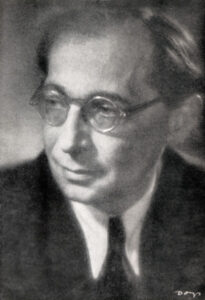
The strongest blows to the stability of the regime in Poland came from the least expected direction – Moscow. Firstly, during the 20th Congress of the Communist Party of the Soviet Union in February 1956, Soviet leader Nikita Khrushchev, with surprising passion, held Stalin responsible for many crimes, which, contrary to his intentions, struck at the Soviet model of building socialism in the countries of the bloc. Secondly, Stalin’s Polish governor, Bolesław Bierut, died shortly after the end of the congress. This fact finally shattered Stalin’s tottering power structure, and created a vacuum at the top of the government.
The election of his successor, Edward Ochab, by agreement with the Kremlin, was only seemingly a manifestation of party unity. In reality, Ochab was seen as an interim leader. The party elite was deeply divided into conflicting factions, holding one another responsible for Stalinism, arguing over the programme of change and – most significantly – maintaining or attempting to reduce dependence on the Soviet Union. Hopes associated with this were more and more commonly identified by the public with Władysław Gomułka, recently released from prison and removed from power for (as was generally believed) insisting on a separate, ‘Polish road to socialism’. His rapidly growing popularity meant that his return to politics was surrounded by intense rivalry between party factions.
As can be seen, the Poznań rebellion had been preceded by several months, during which the monolith of the communist system was marked by more and more cracks testifying to the strength of structural conflicts, and internal contradictions hidden under the surface.
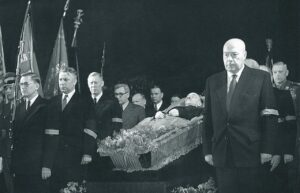
The workers
Workers, as a group supposedly represented by the ‘people’s’ government, felt the contrast between the communists’ rhetoric and reality, proving the irrationality of the whole system particularly strongly. For them the economic chaos, the incompetence of the management, the repressiveness of the regime, and its dependence on the Soviet Union, was especially painful. In 1955, clearly growing tension was apparent within the factories. On the one hand, as part of the downsizing of the repressive apparatus, 90 per cent of ‘security offices’, i.e. Security Service cells, typically comprising several persons, and created to nip dissatisfaction in the bud and psychologically terrorise workers, were abolished. As a result, the control of the security apparatus over workers was weakening. On the other hand, after the party announced, in January 1955, that it would fight against ‘bureaucratic deviations’, and cautiously allowed the press to describe local wrongs, the status quo of the local power apparatus was dented. This knocked the apparatchiks out of the roles to which they had been accustomed for years, and they grew increasingly confused and lost.
From the workers’ perspective, the party’s declarations were pure rhetoric as the representatives of the management, usually the same ones responsible for draconian discipline, now spoke of the need to improve the lot of the ‘working class’. These, in turn, saw that nothing was changing, and had no illusions as to the sincerity of these official assurances. They stood in stark contrast to the daily hardships experienced at work and in everyday life. Thus, in the factories, the barrier of fear was falling, while the workers’ sense of socio-economic deprivation grew, which was like asking for an explosion. The June rebellion in Poznań, and the turmoil in the factories that the whole of Poland experienced until the end of 1956, was a kind of indictment slapped at the communist authorities for their entire post-1945 social policy.
The earthquake
It appears that a strike like the one at the Joseph Stalin Metal Works (earlier and later the Hipolit Cegielski Works) could have occurred in any major industrial centre. The problems and conflicts in Poznań reflected the conditions throughout the country. Regardless of where they lived and what industry they worked in, the attitudes of the workers were shaped by such aspects as elevated production quotas, low wages, dreadful health and safety conditions, difficulties in obtaining supplies, dramatic housing conditions, arrogance, hypocrisy and corruption on the part of government officials, terror, brutal suppression of the Church, and Poland’s dependence on the Soviet Union.
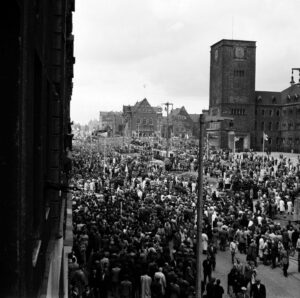
These common experiences were also shared by the workers of the Cegielski plant. It is difficult not to notice that, in the factory, which, after Khrushchev’s famous speech, was one of the places in Poznań where lively discussions were held between employees, the main topics concerned the façade of the regime’s trade unions, demands for the liquidation of shops and catering outlets operating ‘behind yellow curtains’[1], improvement of work safety conditions and the demands that came back in full force in June 1956: the reimbursement of illegally inflated tax on salaries and the restoration of bonus progression.
The likelihood of an explosion at the Cegielski plant was radically increased by a combination of several circumstances. Firstly, historians have repeatedly drawn attention to the particularly unfavourable economic, social, and housing situation in the region of Wielkopolska (Greater Poland), and in particular its capital Poznań itself, as compared to the rest of the country. Secondly, this was a plant where a large proportion of the workforce consisted of those with pre-war experience, cultivating a traditional work ethos, and capable of collective action in defence of their interests. Thirdly, the conflict had been brewing for many months, which made it possible to identify a group of leaders, establish contacts with other plants, and prepare a joint action. Fourthly and finally, the workers had exhausted all possibilities of fighting for their demands in a legal fashion.
When, following the talks of delegates sent to Warsaw to present the demands of the workers, the relevant minister appeared at the plant, his speech was interpreted as a rejection of the most important postulates. It was realised that the only thing left to do was to reach for the ultimate weapon – a strike – and at the same time that the authorities were nevertheless softening, which promised some chance of success. The approaching International Poznań Fair, organised for the second time following a five-year break, created a unique opportunity for determined workers to make their protest well-known. The fair in Wielkopolska attracted not only factory representatives from all over the country but, above all, many western foreigners. However, in order for the world to learn about the protest, the strikers had to leave the factory walls, and move to the vicinity of the fairgrounds.
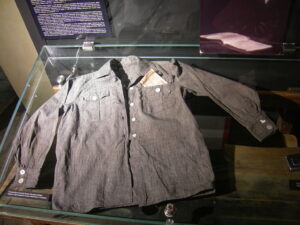
At the sound of the factory siren announcing the strike, almost the entire workforce, around 10,000, exited the Cegielski plant’s gate, taking down the Joseph Stalin Works sign. On their way, they were joined by workers from other factories and ordinary people from Poznań who had been going about their business since morning. Tens of thousands of people gathered on the central square and in neighbouring streets. None of the workers’ leaders had a ‘what next’ plan and, when the crowd had already gathered in front of official buildings, and attempts to talk to the surprised representatives of those in power proved futile, nobody was able to control the situation. The events began to unfold spontaneously and to escalate.
Slogans of a political nature appeared, and it was not the Internationale that was sung as during the march, but the national anthem, as well as patriotic and religious songs. Demonstrators waved white-and-red national flags, and walked around the city with banners demanding the reduction of prices and production quotas, as well as inscriptions, such as We demand bread and We want to live. Down with dictatorship, someone wrote on a tram. The feelings of the demonstrators are perhaps best expressed by two placards they hung on the building of the party’s provincial committee: Bread and Freedom. The protest turned into a rebellion with an anti-system and national slant. This should not come as a surprise because national feelings motivate people much more strongly than social ones, and when there is not much left to lose, the intensity of violence born out of patriotic reasons is generally stronger than the scale of violence born out of economic discontent.
Within hours, the Stalinist apparatus of power in Poznań had collapsed. The demonstrators took over local government buildings, smashed up the prison where they obtained weapons, attacked the court and prosecutor’s offices, and destroyed the transmitter jamming western radio stations, especially Radio Free Europe. They were resisted only by the Security Service officers defending their headquarters, who were afraid, not without a reason, of how they would be treated if they fell into the hands of the crowd. The first shots fired from the building began the siege, which lasted several hours. Rumours of clashes in other cities were repeated among the protesters and the political police building, stormed and fired at, appeared to the people on the streets as the last unconquered bastion of communism. Armed groups of demonstrators disarmed police stations in Poznań and surrounding towns in order to acquire additional weapons and ammunition. The mechanisms governing crowd psychology explain the dynamics of the protest evolving from a social and economic revolt, through anti-communist rebellion, to a national uprising, as the June events appeared to their participants, referring to patterns of behaviour suggested by collective memory.
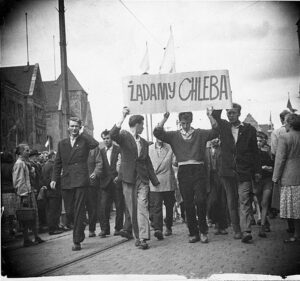
The Poznań rebellion caused chaos at all decision-making levels of the regime, revealed an unpreparedness for responding to events of that type, resulting in the deployment of forces disproportionate to the actual size of the resistance. Two armoured divisions of 360 tanks and two infantry divisions entered the city, totalling over 10,000 troops. During the clashes, including those caused by accidental gunshots, 57 people were killed and 650 wounded. The youngest victim was 13-year-old Romek Strzałkowski.
Tension is rising
With today’s knowledge of what happened to Poland later under communist rule, it is clear that the June events were both the final attempt at an armed insurrection, and the precursor to a new form of open, mass social protest: a strike evolving into a demonstration heading for local government representation. At the time, the main reference, especially for party decision-makers or observers in the West, was the anti-communist uprising in the GDR three years prior and, to a lesser extent, the workers’ revolt at the automobile (pre-war Škoda) plant in Plzen. An analysis of the reaction of the GDR and Czechoslovakian regimes, as well as their socio-economic policies after the revolts of 1953, would perhaps allow for the formulation of a hypothesis as to why it was Poland that experienced successive crises after 1956. It is possible that the right lessons were not learnt in Poland from the painful experiences of the ‘brotherly’ regimes, and that it was already too late for this in 1955/1956.
The decision-makers in Warsaw became alarmed, and their fears that the uprisings would spread to other parts of the country were justified, as evidenced by alarming reports from the political police on public mood and reactions reaching their desks. The drastic pacification of the revolt prevented such developments, but could not suppress the spread of news and rumours throughout the country. Despite the strict information blockade, and the hypocritical propaganda campaign, society as a rule had a good idea of what had really happened in Poznań – that desperate workers had come forward – and reactions of great agitation exploded everywhere. Hunger wages, inflated production quotas, the rejection of the official narrative of ‘hostile provocation’, and an understanding for the demands of the Poznań workers were the main topics of hundreds of daily conversations. There was often solidarity with them expressed in hundreds of spontaneous and rapid individual and collective reactions.
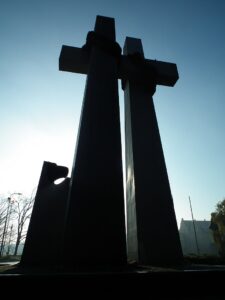
The authorities felt that they were racing against time and frantically searched for solutions to calm the revolutionary public mood, but because of the clinch in the Politburo, and the deep divisions in the party elite, of which half of Poland was aware after the 7th Plenum of the Central Committee in July, they found themselves at an impasse. In September 1956, public tensions started to rise and, in October, in the days preceding the 8th Plenum of the Central Committee, which was to bring about definitive decisions, the situation reached boiling point – which brought Władysław Gomułka to power. It was the regime’s fear of an awakened society, aroused in June, that was the key element leading to the October thaw, and it would not be an exaggeration to say that there would have been no October events without the ones in June. However, had it not been for the autumn breakthrough and the rehabilitation of the Poznań mutiny, recognised by Gomułka as a legitimate working-class protest (regardless of how tactically driven and short-lived it was), it would most likely have remained an event like the anti-communist uprising in East Germany of 17 June 1953, an isolated event, the memory of which was largely erased from national consciousness for many years by the local authorities.
Author: Paweł Sasanka – PhD in History, employee of the History Research Office of Institute of National Remembrance
Translation: Mikołaj Sekrecki
[1] Where otherwise unavailable goods were sold to the privileged.





